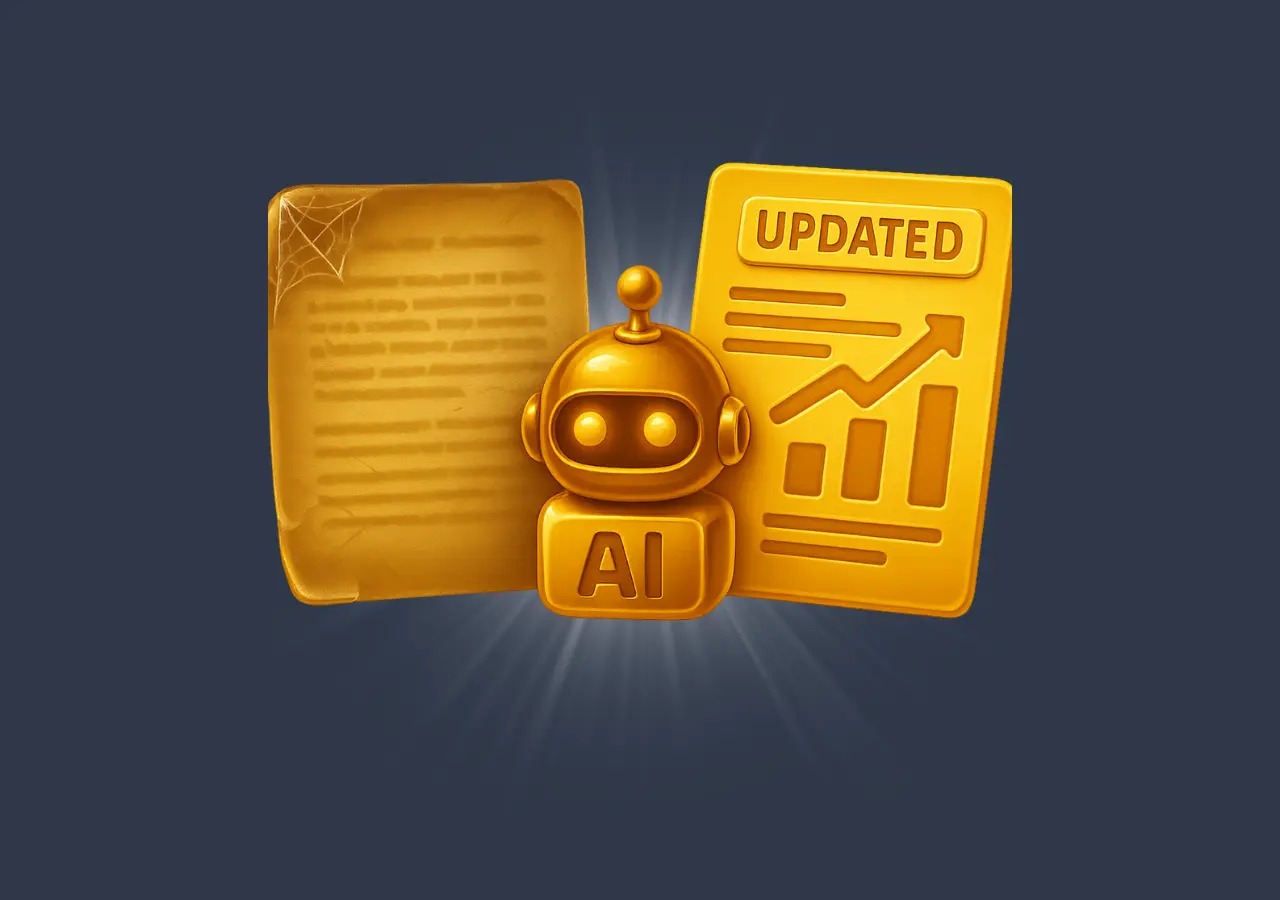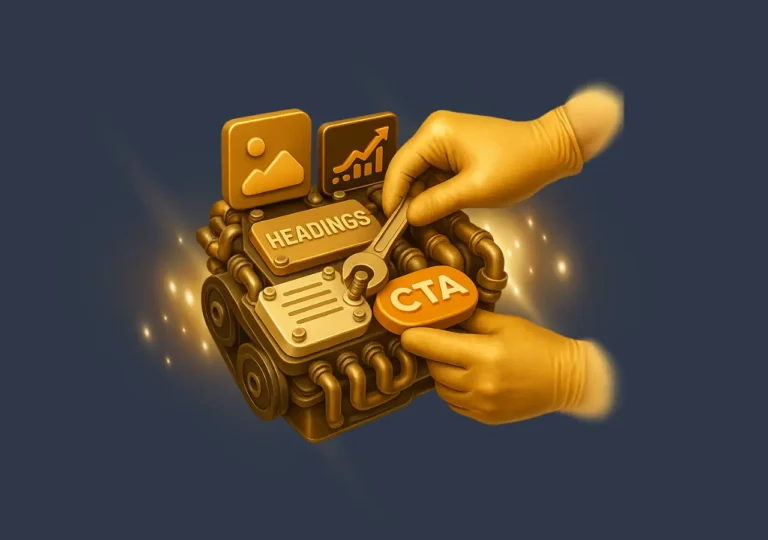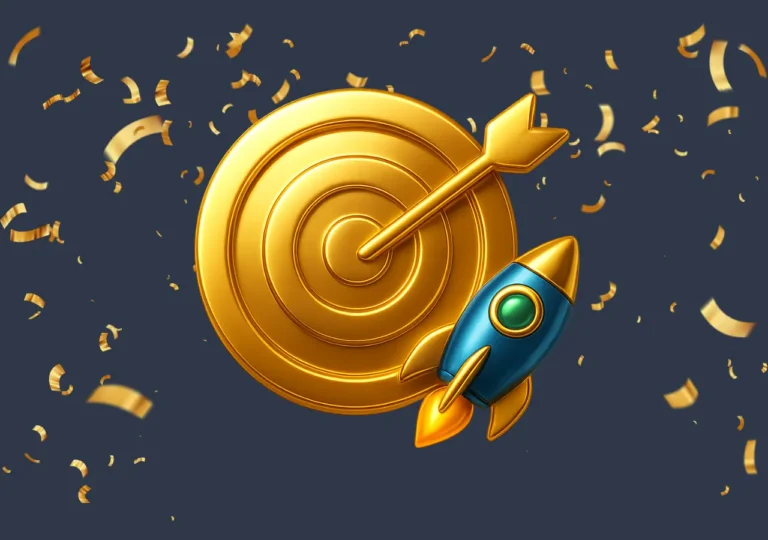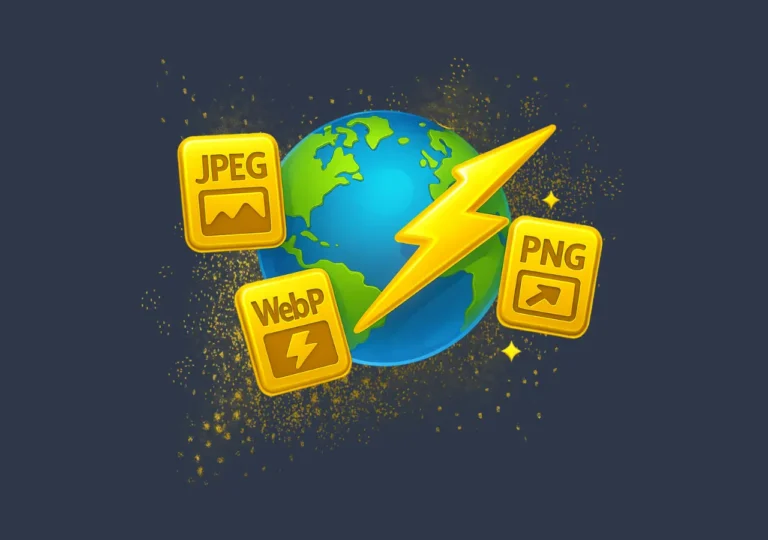
Why refresh old posts (and why it matters) 💡
Old content isn’t dead — it’s just napping. Seriously. Lots of sites have posts that used to pull steady traffic but slowly drifted down the SERPs as facts changed, links broke, or search intent shifted. Instead of rewriting from scratch (time-consuming and pricey), you can refresh those posts: update facts, add new examples, clean up structure, and tune SEO. The payoff? Faster wins, less effort, and often a big bump in organic traffic.
Think about it like gardening: you don’t chop down a mature tree when it’s losing leaves; you prune and feed it. 🌳
- Lower effort: updates require less time than full rewrites
- Higher ROI: existing authority and backlinks remain valuable
- Faster results: search engines often re-evaluate updated content quickly
- Better user experience: readers get current info, which improves trust
Oh, and don’t forget E‑E‑A‑T (Experience, Expertise, Authoritativeness, Trustworthiness) — updating a post can directly boost perceived expertise if you add citations, recent stats, or author notes. Sounds interesting, right? (Yep — search engines like fresh, accurate stuff.)
How AI finds outdated articles (the signals and tools) 🕵️♀️
AI can scan your content inventory and highlight posts that are ripe for refresh. It looks for signals — some obvious, some subtle — like drops in organic traffic, pages that rank for low-intent queries, outdated timestamps, broken links, or references to old laws/versions (think software docs). Combine that with semantic analysis and you get a prioritized list instead of guesswork.
Common signals AI flags
- Traffic decay: pages losing impressions or clicks
- Stale dates: “2020” or older timestamps
- Outdated entities: mentions of deprecated APIs, old product names
- Broken assets: dead images, 404 links
- Thin content: pages with low word counts or weak coverage
Tools like search console exports, site crawlers, and AI models (NLP-based topic freshness, entity recognition) work together. You feed them logs and the full HTML, and the AI returns a prioritized roster: “Fix these 50 posts first.” Handy, right? (You can also train a small classifier on your own past successes — more on that later.)
Prioritization framework: what to refresh first 🔍
Don’t try to refresh everything at once — you’ll burn out. Prioritize. Here’s a practical framework I like: score pages by three axes and multiply them for a shortlist that pops:
- Potential: current impressions + search volume for related queries
- Authority: existing backlinks and domain relevance
- Ease: how much work is needed (minor edits vs. full restructure)
So a high-impression page with many backlinks but minor factual updates = a top target. Conversely, a low-impression thin page with no links might be better off consolidated or pruned. Don’t be afraid to prune; sometimes removing weak pages improves the overall site signal (and yes, that’s a little counterintuitive — but it works).
Quick scoring example
- Potential: 0–10 (search demand)
- Authority: 0–10 (backlinks & internal links)
- Ease: 0–10 (lower is easier)
Multiply (Potential × Authority) / Ease = priority score. Pick the top 20 and start there. You’ll learn fast, and the AI can refine the scoring as you feed it which refreshes succeeded (or flopped).
The AI-assisted update workflow (step-by-step) ⚙️
Here’s a repeatable workflow you can automate — and no, you don’t lose human control. Think of AI as a power tool: it speeds things up but you still guide it.
- 1) Inventory: export pages, traffic, backlinks, and content snapshots.
- 2) Scan: run AI models to detect stale facts, broken links, and content gaps.
- 3) Prioritize: apply the scoring framework and pick targets (top N).
- 4) Draft suggestions: AI proposes updated facts, new H2s, and suggested statistics or sources.
- 5) Human edit: writer reviews, verifies facts, and preserves voice.
- 6) SEO tweaks: update meta tags, schema, internal links, canonical lines.
- 7) Publish & monitor: watch rankings and clicks, run A/B tests if needed.
Two practical automations to consider: one, schedule periodic scans (monthly or quarterly) so
SEO optimizations during refresh (what actually moves the needle) 🚀
Updating text alone helps, but pairing updates with SEO actions is what yields SERP gains. Here are the high-impact levers to flip during a refresh:
- Title & meta: craft a more current, intent-aligned title and meta description.
- Headers: reorganize H2s/H3s for topical completeness and keyword clarity.
- Internal links: add links from newer, high-authority pages (and remove irrelevant links).
- Schema markup: update structured data (FAQ, HowTo, Article) to reflect new content.
- Canonical & hreflang: ensure canonical is correct and language variants are handled.
- Page speed & images: compress images, lazy-load, and fix slow scripts.
Also, don’t neglect search intent. If a query’s intent shifted (from “what is” to “best X 2025”), rewrite the intro and headings to satisfy the new intent. Quick wins often come from a better title + one strong new paragraph that answers the updated query. Seems small, but it works — trust me (and empirical tests).
Human + AI editing: preserving voice and quality ✍️
AI suggestions are great, but a human touch is crucial. Keep the author’s voice, check facts, and watch for hallucinations (AI confidently inventing sources — ugh). Here’s how to blend them without losing authenticity:
- Use AI for research & outlines: let it surface sources and draft suggested H2s.
- Human verifies: confirm every fact, stat, and quote (source links are a must).
- Keep the voice: replace AI phrasing with the brand’s tone; editors should rework transitions.
- Flag uncertain content: if AI is unsure, mark it for deeper research, not blind acceptance.
Pro tip: maintain an “update note” at the top (small timestamp and summary of what changed). Readers — and editors — love transparency. It also helps with content audits later (and yes, that sometimes makes legal teams happier too).
Measuring impact: KPIs and A/B testing 📈
Measure everything. A refreshed post might not jump to the top of page 1 overnight, but the right KPIs show progress. Track organic impressions, clicks, average position, and CTR, plus engagement metrics like time on page and bounce/scroll depth. If you do A/B tests (serve the refreshed content to a percentage of traffic), you can get faster, cleaner signals about lift.
- Short-term KPIs (0–30 days): impressions, clicks, CTR
- Mid-term KPIs (30–90 days): ranking changes, session duration
- Long-term KPIs (90+ days): conversion rate, backlink accrual, revenue impact
And yes, run controlled experiments when possible. Use server-side or CDN edge experiments to serve variants and compare performance. If A/B is too heavy, at least monitor cohorts: refreshed vs. similar unrefreshed posts. Patterns emerge quickly — and you’ll want to feed that back into the AI’s prioritization model (so the system learns which edits matter most).
Common pitfalls & best practices (quick checklist) ⚠️✅
There are a few traps: over-editing (losing what made a post rank), blindly trusting AI, and neglecting technical SEO. Here’s a compact checklist to avoid common mistakes and keep wins steady:
- Don’t remove ranking keywords: if a phrase drove traffic, keep it somewhere (title, H2, or body).
- Verify sources: every stat the AI adds should have a reliable source link.
- Respect intent: if users expect a “how-to”, don’t turn it into a long opinion piece.
- Log changes: keep a changelog for auditing and for the AI training dataset.
- Measure & revert: if performance drops, revert and iterate (A/B helps here).
Bonus tip: schedule “content health” scans quarterly. It’s easier to keep a garden tidy than to restore a jungle. 🌿
Quick reference table: before vs after metrics (example)
| Metric | Before | After (60 days) |
|---|---|---|
| Organic clicks | 420 | 1,200 |
| Average position | 23 | 8 |
| Backlinks gained | 3 | 12 |
Alright — if you take one thing from this: prioritize smart, use AI to augment research and templating, but keep humans making the final calls. The combo is fast, scalable, and respectful of quality (and yes, definately worth trying).
FAQ: Refreshing Old Blog Posts
Because old posts lose rankings over time. Refreshing updates facts, adds new examples, and boosts SEO — without rewriting everything from scratch.
Look for signs: traffic drops, outdated dates, broken links, or mentions of old tools. AI and analytics can flag these quickly.
Refreshing is faster. You keep the backlinks and authority, but fix what’s outdated. A full rewrite usually takes more time.
Pick posts with high impressions and backlinks but small fixes needed. That’s where you’ll see the biggest wins.
AI scans your posts for broken links, outdated facts, and thin content. It suggests updates, but you make the final edits.
Update the title, meta description, and headers. Add internal links, refresh schema, and check page speed. Small tweaks often bring quick gains.
Track impressions, clicks, and rankings in the first month. Then look at engagement and conversions over the next few months.
Don’t delete ranking keywords. Don’t trust AI without fact-checking. And don’t forget to log your changes so you can revert if needed.
This article was prepared using the AUTO-POST-SEO plugin






